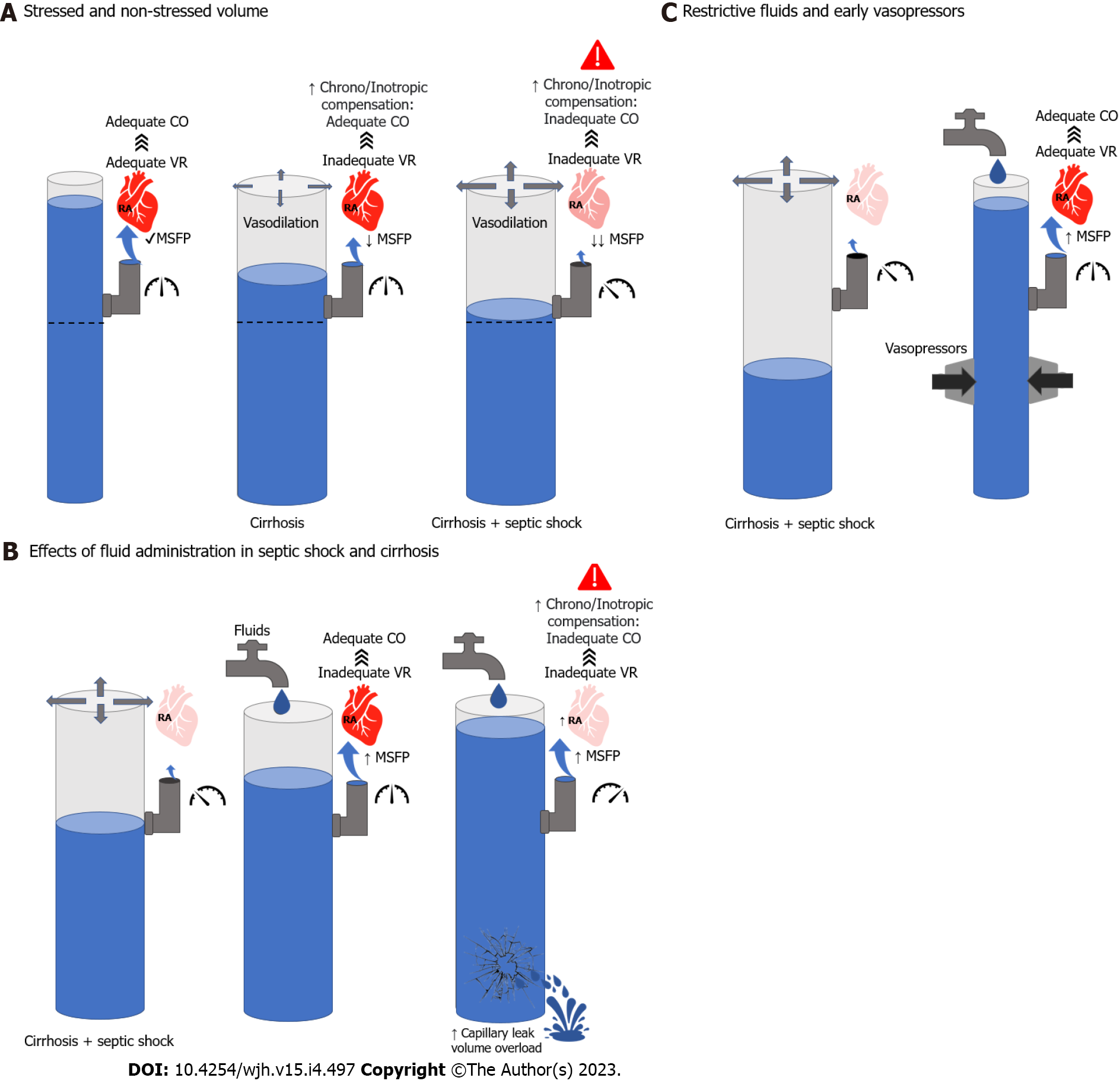Copyright
©The Author(s) 2023.
World J Hepatol. Apr 27, 2023; 15(4): 497-514
Published online Apr 27, 2023. doi: 10.4254/wjh.v15.i4.497
Published online Apr 27, 2023. doi: 10.4254/wjh.v15.i4.497
Figure 1 Hemodynamic considerations in the management of cirrhosis and septic shock.
A: Left; Normal mean systemic filling pressures (MSFP) leading to adequate venous return and cardiac output (CO). Middle; vasodilation in cirrhosis leading to lower MSFP and inadequate venous return (VR). However, compensatory mechanisms are able to maintain adequate CO. Right; further vasodilation leading to lower MSFP and inadequate VR. In this case, neurohumoral and cardiac compensation are not enough to maintain CO; B: Left; cirrhosis and septic shock pathophysiology. Middle; Effects of adequate volume resuscitation leading to increased MSFP. In the context of normal filling pressures, this will increase VR and CO. Right; Excessive fluid resuscitation will lead to high filling pressures which will decrease VR and CO. In addition, it may lead to volume overload and capillary leak; C: Left; cirrhosis and septic shock pathophysiology. Right; adjuvant effect of fluids and vasopressors on MSFP, VR and CO without leading to volume overload. CO: Cardiac output; MSFP: Mean systemic filling pressures; RA: Right atrium; VR: Venous return.
- Citation: Jimenez JV, Garcia-Tsao G, Saffo S. Emerging concepts in the care of patients with cirrhosis and septic shock. World J Hepatol 2023; 15(4): 497-514
- URL: https://www.wjgnet.com/1948-5182/full/v15/i4/497.htm
- DOI: https://dx.doi.org/10.4254/wjh.v15.i4.497









